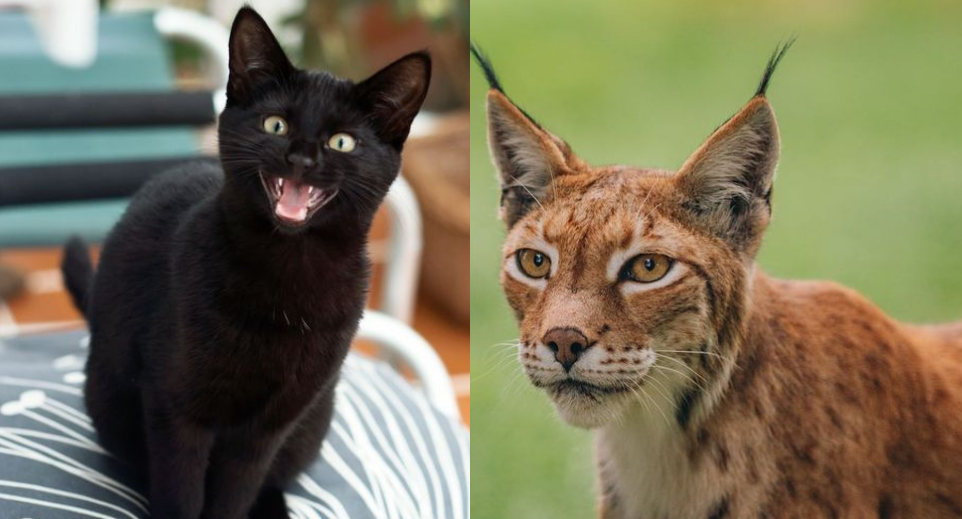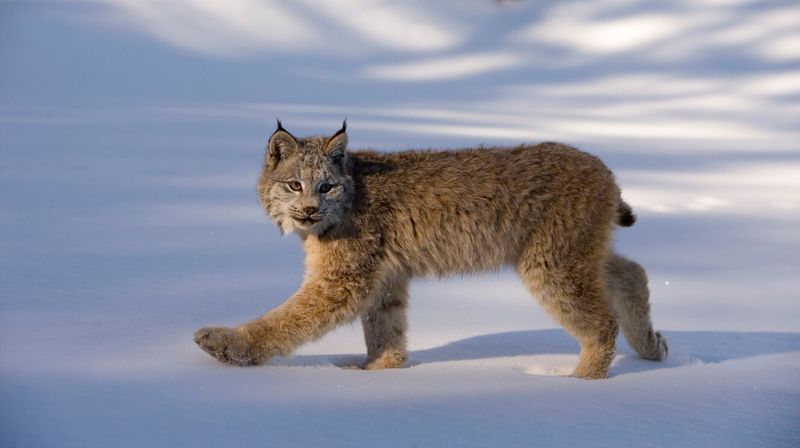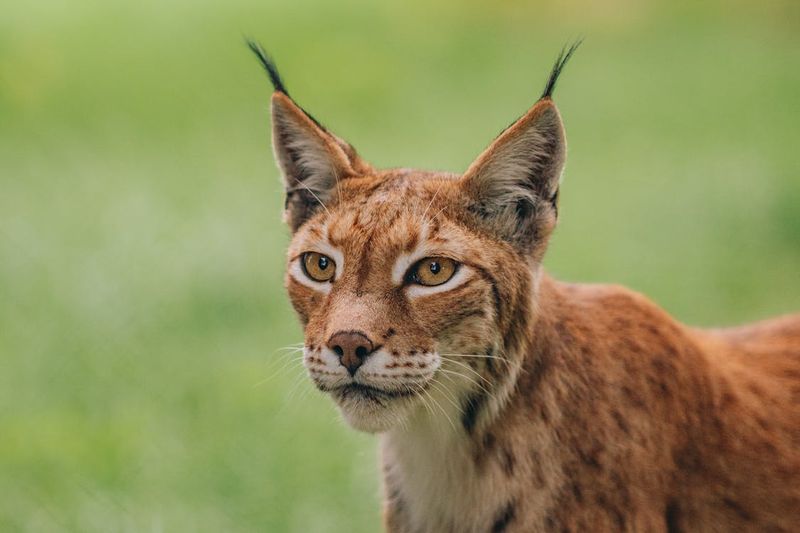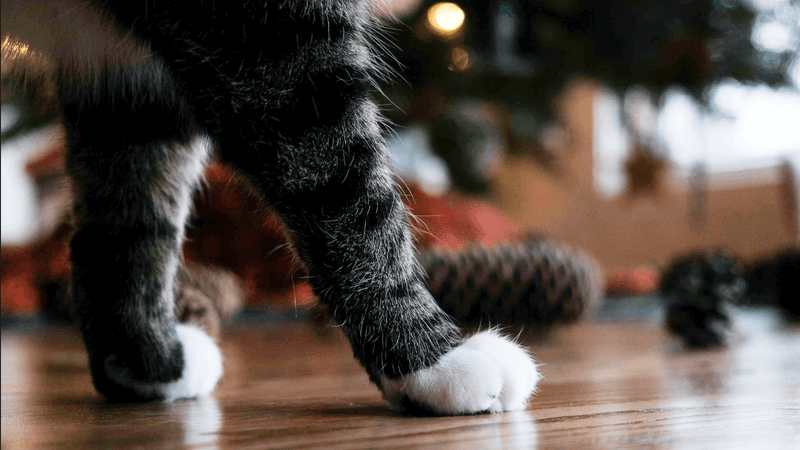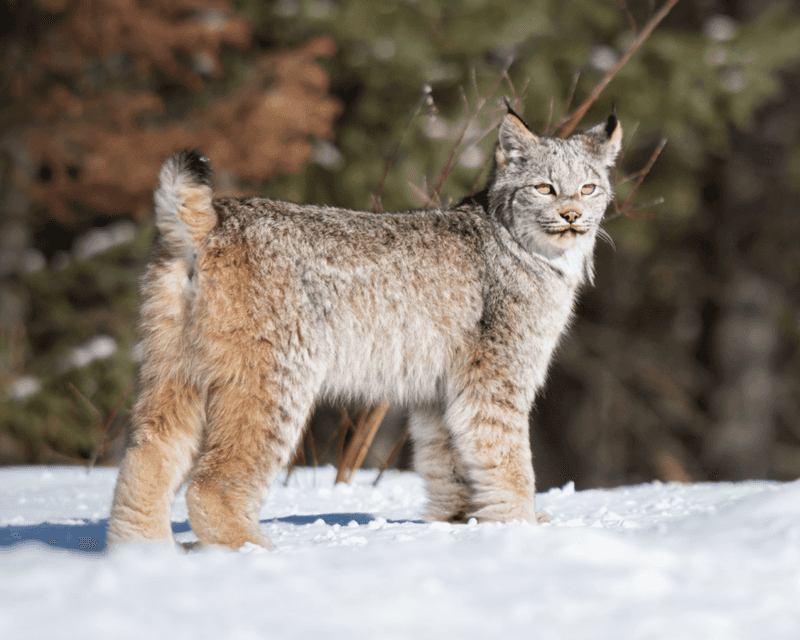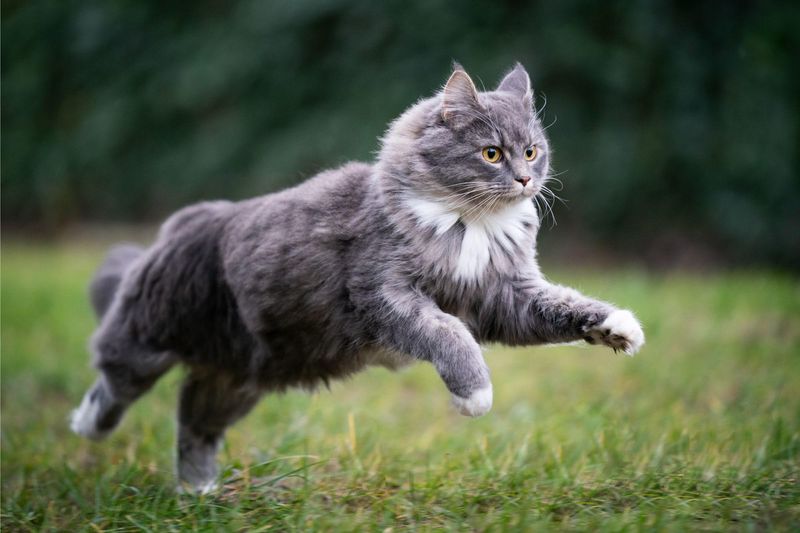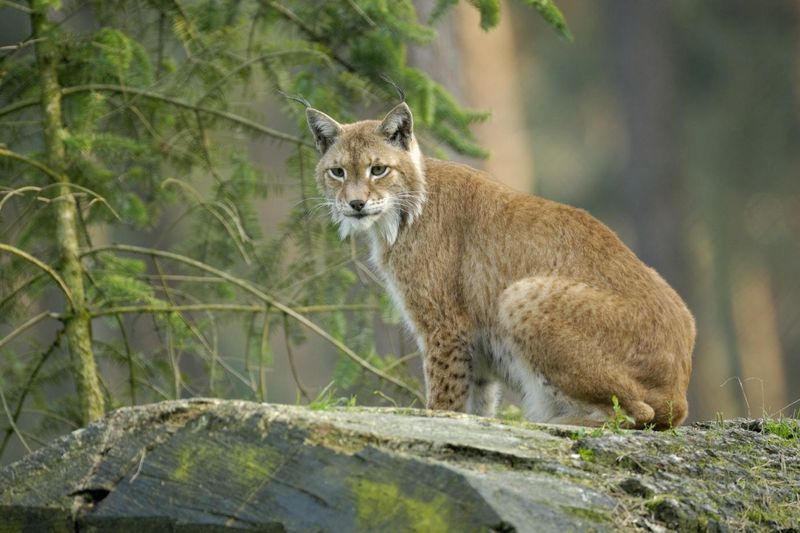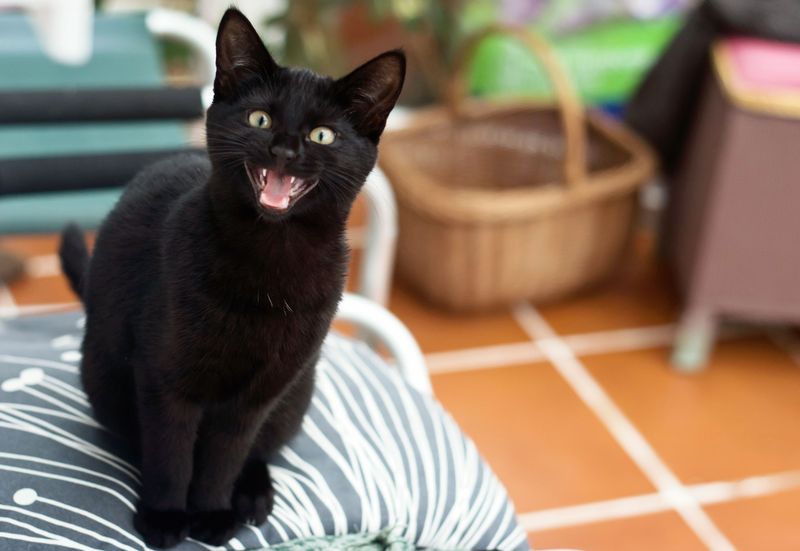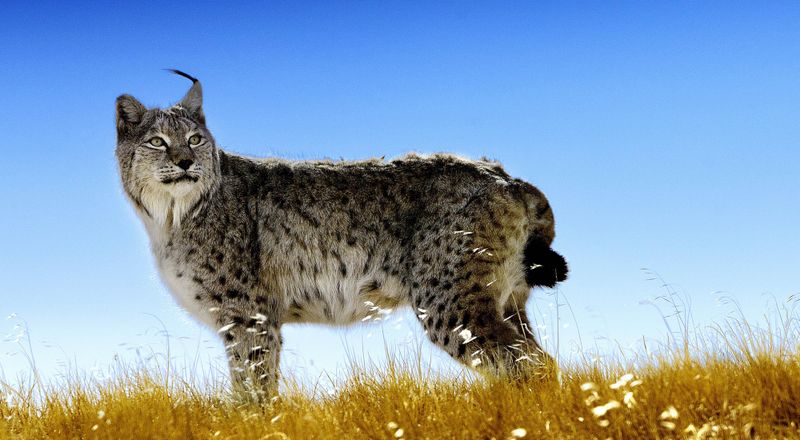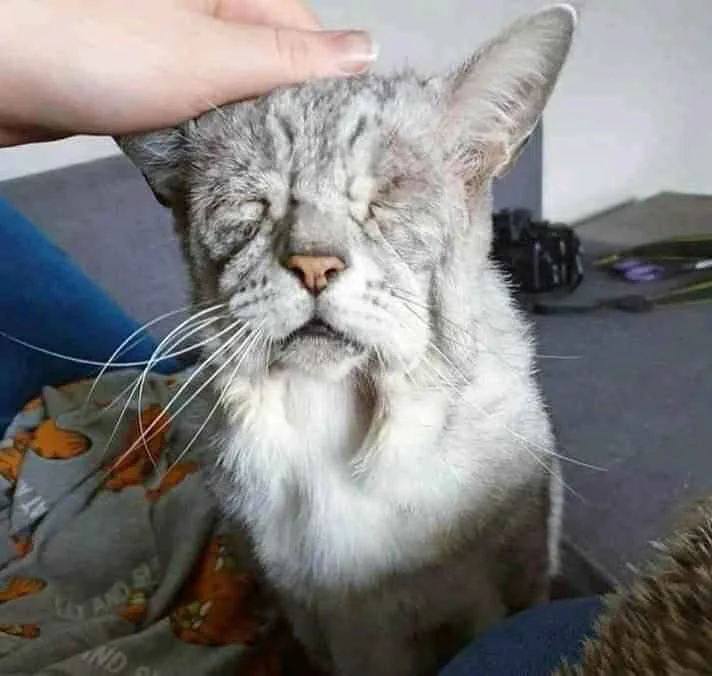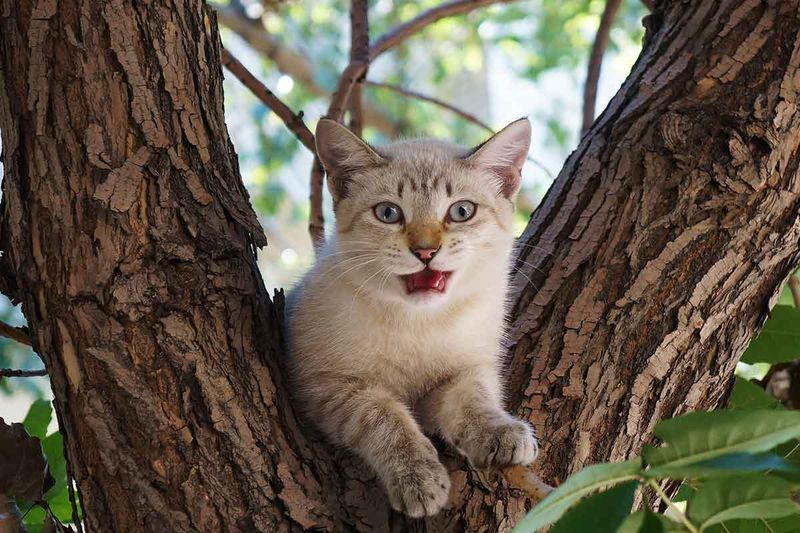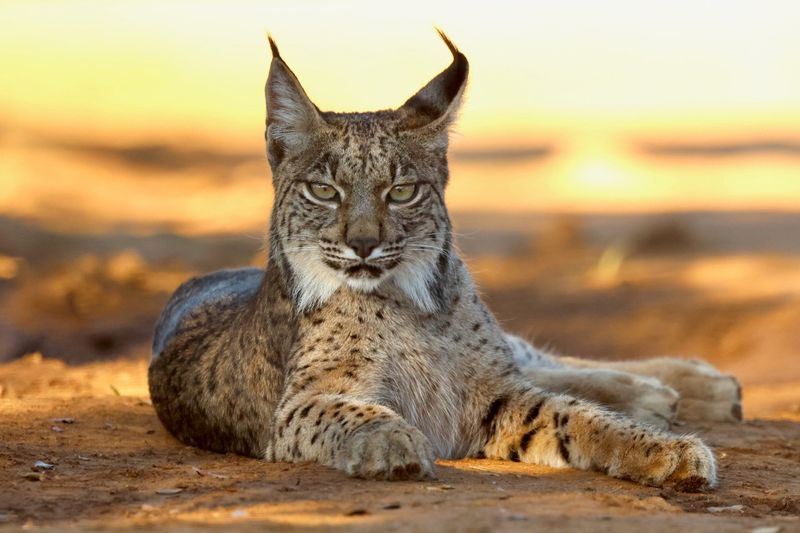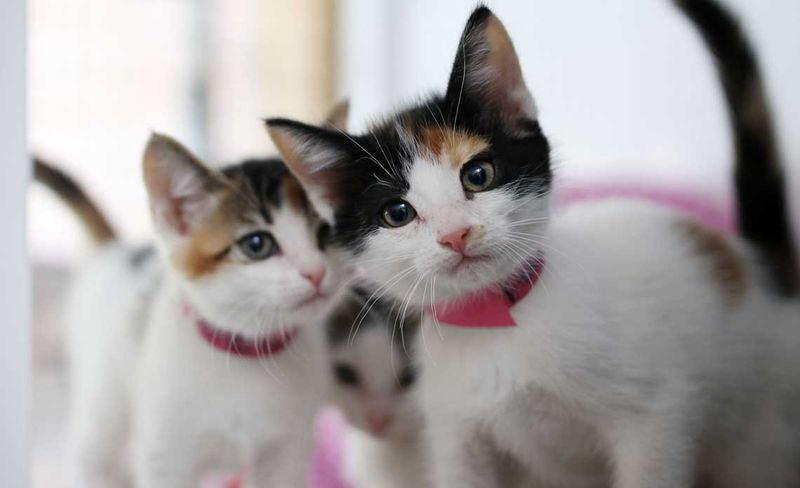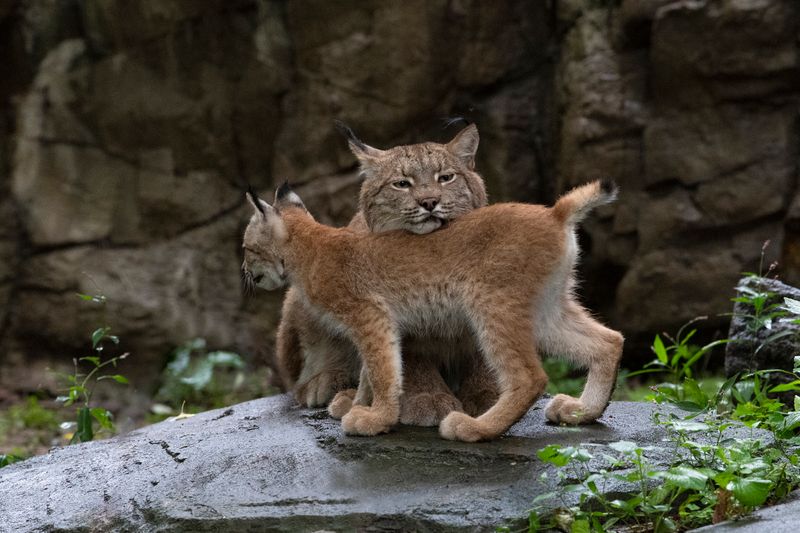📖 Table of Content:
- 1. Size & Weight
- 2. Ear Tufts
- 3. Paw Size & Fur
- 4. Tail Length
- 5. Eye Shape & Color
- 6. Hunting & Diet
- 7. Speed & Agility
- 8. Habitat & Range
- 9. Vocalizations
- 10. Social Behavior
- 11. Lifespan
- 12. Climbing & Swimming Abilities
- 13. Domestication
- 14. Breeding & Reproduction
- 15. Legal & Ethical Aspects of Ownership
At first glance, a lynx might seem like an oversized version of a domestic cat, but these two felines are vastly different in many ways. While they share some similarities in body structure and certain behaviors, lynx are wild predators built for survival in harsh environments, whereas house cats have adapted to a life of companionship with humans. The key differences between them go beyond just size and appearance—everything from their hunting skills to their vocalizations sets them apart. Understanding these distinctions not only helps us appreciate the wild beauty of the lynx but also sheds light on why domestic cats have thrived in human homes for thousands of years.
One of the most striking differences between a lynx and a house cat is their physical characteristics. Lynx are much larger, with thick fur, powerful limbs, and large, snow-adapted paws that allow them to navigate their natural habitats with ease. Their short, stubby tails and long, black ear tufts are distinct features that help them blend into their surroundings and enhance their senses. In contrast, domestic cats are smaller and more diverse in appearance, having been bred into various shapes, sizes, and colors. While house cats may retain some wild instincts, they lack the specialized adaptations that make lynx such effective hunters in the wilderness.
Beyond their looks, lynx and domestic cats differ greatly in behavior and lifestyle. Lynx are solitary animals that roam vast territories, relying on their keen senses and powerful build to hunt prey like hares and deer. Unlike house cats, they do not meow or purr for attention, instead communicating through growls, yowls, and body language. Domestic cats, on the other hand, have been shaped by domestication to be social, affectionate, and dependent on human care. While both animals share an independent streak, only the house cat has fully adapted to coexist with humans. These key differences highlight the fascinating contrast between a wild predator and the beloved pet curled up on your couch.
1. Size & Weight
Lynx are significantly larger than the average house cat, with some species reaching nearly four times the weight of their domestic counterparts. Their strong, muscular bodies are designed for taking down prey much larger than themselves, such as hares or even small deer. While domestic cats vary in size depending on breed, they generally remain small enough to be carried in one’s arms. Unlike lynx, which rely on their size for survival in the wild, house cats have no need for such bulk and agility. This size difference also influences their strength, as a lynx can deliver a powerful bite and swipe that could seriously injure a human, whereas a house cat’s attack is much less dangerous. Despite their smaller stature, domestic cats retain some of the agility and speed of their wild relatives. However, in a head-to-head comparison, a lynx’s sheer power and size make it a far more formidable feline.
2. Ear Tufts
Distinctive black ear tufts set lynx apart from their domestic relatives, serving both practical and aesthetic purposes. These tufts, which can grow up to several inches long, enhance the lynx’s ability to detect sounds by directing noise toward their ears. Unlike the lynx, house cats have much smaller or nonexistent tufts, as they do not rely on them for survival. The lynx’s ear tufts are believed to aid in camouflage, breaking up the shape of their head against snowy or forested backdrops. Although some domestic breeds, like the Maine Coon, may have slight ear tufts, they are nowhere near as prominent or functional as those of a lynx. Evolution has fine-tuned the lynx’s ears to work as advanced sensory tools, helping them detect prey from great distances. In contrast, domestic cats rely more on their adaptability and human-provided food rather than acute hearing for hunting.
3. Paw Size & Fur
Enormous, well-furred paws make the lynx a master of navigating snowy landscapes. These large feet act as natural snowshoes, distributing their weight evenly to prevent sinking into deep snow. Unlike lynx, house cats have much smaller paws with little fur coverage, making them ill-suited for harsh winter conditions. The thick fur on a lynx’s paws also provides insulation, keeping their feet warm in freezing temperatures. In contrast, domestic cats typically have smooth, hairless paw pads that are better suited for indoor environments or mild outdoor conditions. While some long-haired breeds may develop tufts of fur between their toes, it pales in comparison to the dense, functional coverage of a lynx’s feet. These natural adaptations highlight how lynx have evolved for survival, whereas domestic cats rely on comfort and convenience.
4. Tail Length
Short, stubby tails are a defining characteristic of the lynx, setting them apart from the long-tailed domestic cat. Measuring only a few inches in length, a lynx’s tail lacks the flexibility and expressive capabilities seen in house cats. This shorter tail is an evolutionary adaptation that helps prevent frostbite in their cold habitats while reducing the risk of injury when navigating dense forests. Unlike lynx, domestic cats use their long tails for balance, especially when climbing or making quick, agile movements. The tail of a house cat is also a key communication tool, signaling emotions such as excitement, fear, or contentment. While lynx do not rely on their tails for communication, they compensate with body posture and vocalizations. The stark difference in tail structure reflects the unique evolutionary paths of wild and domestic felines.
5. Eye Shape & Color
Golden or yellow eyes are a signature feature of the lynx, giving them an intense and piercing gaze. Their eye shape is slightly elongated, designed to maximize vision in low-light conditions, which is essential for nocturnal hunting. Unlike lynx, house cats display a wide variety of eye colors, including blue, green, and hazel, due to selective breeding. Domestic cats also have more rounded eyes, which contribute to their expressive and often endearing facial expressions. A lynx’s pupils are more oval-shaped compared to the round pupils of a house cat, allowing for greater control over light intake. This unique eye structure gives lynx an edge in detecting movement from a distance, making them exceptional hunters. Though both animals share sharp eyesight, the lynx’s vision is specialized for wilderness survival, while domestic cats rely on their humans for food.
6. Hunting & Diet
Strict carnivores, lynx rely on their sharp claws and powerful jaws to take down a variety of prey, including rabbits, rodents, and even small deer. Their diet consists solely of meat, requiring them to hunt frequently to sustain their energy levels. Unlike lynx, domestic cats have adapted to a more flexible diet, often consuming kibble, wet food, and occasional plant-based ingredients. While house cats may exhibit hunting instincts by stalking birds or mice, their reliance on humans for food makes their hunting skills far less refined than those of a lynx. A lynx’s diet is dictated by availability, often forcing them to go days without eating, whereas domestic cats enjoy regular feeding schedules. Additionally, lynx have specialized digestive systems that process raw meat efficiently, while house cats might struggle to digest the same diet without risk of illness. These dietary distinctions reflect the fundamental difference between a wild predator and a domesticated companion.
7. Speed & Agility
Lynx are powerful and agile, capable of making impressive leaps of up to ten feet in a single bound. Their strong hind legs allow them to accelerate quickly, making them formidable hunters that can ambush prey with precision. In contrast, domestic cats, while still quick and agile, lack the explosive power and endurance of a lynx. House cats use their speed primarily for short bursts, such as chasing a toy or escaping a perceived threat, whereas lynx must rely on their agility for survival. The lynx’s muscular build also enables them to maneuver through rugged terrain, while domestic cats are more suited to urban or home environments. Despite their differences, both felines share an innate ability for balance and quick reflexes. However, in a test of endurance and power, the lynx easily surpasses its domestic counterpart.
8. Habitat & Range
Lynx thrive in vast, remote wilderness areas, including dense forests, tundras, and mountainous regions. Their natural habitats provide ample cover and prey, making them well-adapted to life in the wild. Unlike lynx, domestic cats have no specific habitat requirements and can comfortably live indoors, in urban settings, or in rural areas. House cats have adapted to a wide variety of environments, but they still lack the survival skills necessary to thrive in extreme conditions like a lynx. The range of a lynx species depends on factors like food availability and climate, often requiring them to travel long distances in search of prey. Domestic cats, on the other hand, have much smaller territories and do not need to roam extensively, as their food and shelter are provided by humans. These differing habitat needs highlight how one feline is built for independence, while the other thrives on companionship.
9. Vocalizations
Lynx produce a variety of eerie and powerful sounds, including deep growls, piercing yowls, and even haunting screams, especially during mating season. Their vocalizations are meant for long-distance communication in the wild, warning rivals or attracting mates. Unlike lynx, domestic cats have a much wider range of sounds, including purring, meowing, chirping, and trilling, which help them communicate with both humans and other animals. House cats have even evolved to modify their meows to get attention from humans, a trait that is absent in the lynx. Since lynx live solitary lives and rely on stealth, they do not communicate as frequently as domestic cats, who use their voices to express emotions and needs. The distinct differences in vocal behavior further emphasize how lynx remain untamed, while domestic cats have adapted their sounds for interaction with people. Despite their differences, both felines use vocalizations as an essential survival tool.
10. Social Behavior
Except for the brief mating season or a mother raising her kittens, lynx generally avoid social interactions. Domestic cats, on the other hand, display a wider range of social behaviors, forming bonds with humans, other pets, and even fellow cats in multi-cat households. While some house cats exhibit independent traits, they are far more adaptable to companionship than their wild counterparts. Lynx communicate their dominance or territorial boundaries through scent marking, body language, and occasional aggressive encounters, whereas domestic cats use softer social signals like rubbing, purring, and play. The stark contrast in social tendencies shows how the house cat has evolved for domestication, while the lynx remains an untamed, solitary hunter. Even so, both animals retain an instinct for independence, a trait passed down from their wild ancestors.
11. Lifespan
A lynx’s lifespan is significantly influenced by the challenges of living in the wild, where factors like predation, food scarcity, and human threats limit their years. Typically, wild lynx live between 10 and 15 years, though those in captivity may exceed 20 years due to better care and consistent food sources. Unlike lynx, domestic cats generally live much longer, often reaching 12 to 20 years, with some even surpassing 25 years in ideal conditions. Veterinary care, vaccinations, and a stable food supply contribute to the increased longevity of house cats compared to their wild relatives. While lynx must fend for themselves and endure harsh environments, domestic cats are protected from natural dangers, leading to a longer and more comfortable life. However, stray and feral domestic cats face similar survival struggles as lynx, demonstrating the importance of human care. The difference in lifespan reflects how domestication has significantly impacted feline longevity.
12. Climbing & Swimming Abilities
When necessary, lynx can scale trees to escape predators or gain a vantage point, though it is not their primary mode of movement. House cats, on the other hand, are natural climbers, often perching on high furniture, trees, or shelves to observe their surroundings. Unlike domestic cats, which tend to avoid water, lynx are strong swimmers and will cross rivers or lakes if needed to hunt or travel. While some domestic cat breeds, such as the Maine Coon, enjoy water, most prefer to stay dry, unlike their wild cousins. The lynx’s ability to navigate various terrains, whether climbing or swimming, demonstrates its versatility as a predator. Although both animals share agility, the lynx’s survival instincts give it an edge in demanding environments.
13. Domestication
Unlike domestic cats, which have evolved alongside humans for thousands of years, lynx remain independent hunters with no reliance on people. Efforts to tame or keep lynx as exotic pets are largely unsuccessful, as they retain unpredictable behaviors and require vast amounts of space. Domestic cats, however, have been selectively bred for traits that make them more sociable, trainable, and adaptable to human life. While lynx may develop a tolerance for human presence in captivity, they do not seek affection or interaction the way house cats do. The process of domestication has shaped house cats into companion animals, whereas lynx have remained wild and untamed. This fundamental distinction makes it clear why one feline can share a home with humans while the other belongs in the wild.
14. Breeding & Reproduction
After a gestation period of about two months, a female lynx gives birth to a small litter of one to four kittens, which she raises alone. Unlike lynx, domestic cats can breed multiple times a year, often producing larger litters of up to six kittens. This reproductive difference explains why domestic cats have become so widespread, while lynx populations remain limited and vulnerable to environmental changes. Since lynx kittens require extensive care and survival training from their mother, they remain dependent on her for much longer than domestic kittens. House cats, in contrast, mature more quickly and can reproduce rapidly, contributing to the challenge of overpopulation in stray and feral cat communities. The difference in reproductive habits highlights how domestic cats have adapted to high survival rates, while lynx face greater challenges in maintaining their numbers.
15. Legal & Ethical Aspects of Ownership
Owning a lynx as a pet is highly restricted or illegal in many countries due to ethical concerns and the difficulty of keeping a wild animal in captivity. Unlike domestic cats, which are bred for companionship, lynx require specialized care, vast territories, and a diet that cannot easily be replicated in a household setting. Even in areas where exotic pet ownership is permitted, lynx often exhibit unpredictable behaviors that make them unsuitable as pets. Domestic cats, on the other hand, have been raised alongside humans for centuries and are well-suited for household life. The ethical concerns surrounding lynx ownership stem from their need for natural environments and the potential danger they pose to people and other pets. While some individuals attempt to tame lynx, they often fail to provide the necessary care, leading to poor welfare outcomes for the animal. These legal and ethical differences further emphasize why lynx are best left in the wild, while domestic cats thrive in human homes.
